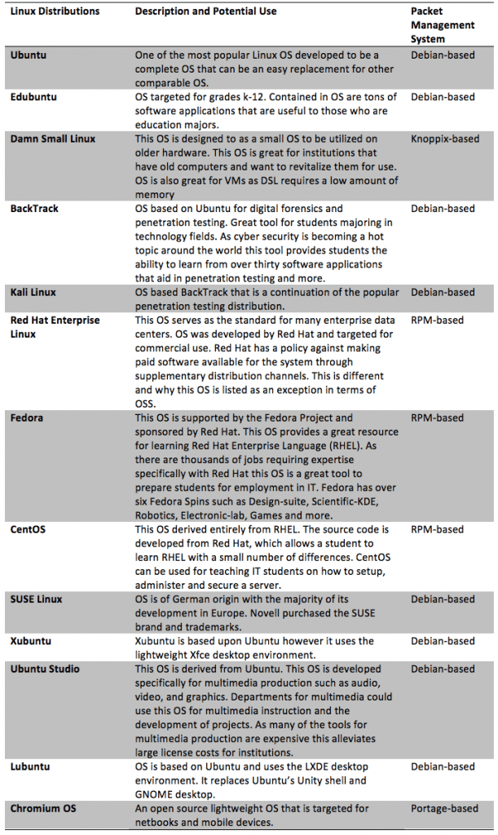Published on
Open Source Software for Learning Technologies in Higher Education

As costs globally continue to rise for education, institutions must become innovative in the ways they deliver the educational labs and other instructional materials.[1] This delivery can be done effectively if professors and administrative staff push toward the insertion of Open Source Software (OSS) and virtual tools to enhance or supplement currently available tools. In developing countries, OSS applications could allow students the ability to learn critical technological skills for success at small fraction of the cost.[2]
This would be achieved through using products associated with the GNU’s Not UNIX (GNU) General Public License (GPL). There are multiple variations of the GNU GPL such as GPLv3, GPLv2, Lesser General Public License (LGPLv3), LGPLv2, and Lisp Lesser General Public License (LLGPL).[3]
OSS also provides faculty members the ability to dissect source code and prepare students for low-level software development. OSS could enhance the Science, Technology, Engineering and Mathematics (STEM) environment by infusing multiple applications that can be developed, analyzed and used as part of the curriculum.[4] It is critical that all institutions look at alternatives in providing training and delivering educational material regardless of limitations going forward as the world continues to be more global due to the increased use of technologies everywhere. Doing this could provide a means of shortening the education gap in many countries. Reviewing the available technology, possible implementations of these technologies and the application of these items in coursework could provide a starting point in integrating these tools into academia. When administrators or faculty debate the possibilities of OSS, gaming and simulation tools, this applied research provides a guide for changing the ability to develop students that will be competitive on a global level.[5]
Considering America’s global ranking in the sciences, OSS could surely be used at the K-12 levels as well. Education reforms such as those that have taken place in cities such as Huntsville, AL, and school districts such as the Alton Community School District provide good examples of how communities can lead with tech insertion. OSS could be used to alleviate strained budgets in American inner city schools for cloud computing, reduction of proprietary licenses for educational software, and digital textbooks.[6] Imagine the possibilities of a proven and tried STEM virtualized OSS lab that can be shared freely among institutions through the use of a cloud environment for educational use without any financial obligation for using that software application.
In Table 1 there is a list of Linux distributions, their descriptions and potential use to include in the associate Packet Management System (PMS) The various distributions could help institutions increase their lab offerings without reducing the quality of teaching. These are but some of the thousands of OSS applications that can be found on SourceForge.

– – – –
References
[1] Dawson, M. E., & Al Saeed, I. (2012). Use of Open Source Software and Virtualization in Academia to Enhance Higher Education Everywhere. Cutting-edge Technologies in Higher Education, 6, 283-313.
[2] Dawson, M., Al Saeed, I., Wright, J., & Omar, M. (2013). Technology Enhanced Learning with Open Source Software for Scientists and Engineers. INTED2013 Proceedings, 5583-5589.
[3] Kumar, S. (2006). Enforcing the Gnu GPL. U. Ill. JL Tech. & Pol’y, 1.
[4] Dawson, M., Al Saeed, I., Wright, J., & Onyegbula, F. (2015). Open Source Software to Enhance the STEM Learning Environment. In Open Source Technology: Concepts, Methodologies, Tools, and Applications (pp. 1493-1503). Hershey, PA: Information Science Reference. doi:10.4018/978-1-4666-7230-7.ch075
[5] Dawson, M., Leonard, B., & Rahim, E. (2015). Advances in Technology Project Management: Review of Open Source Software Integration. In Open Source Technology: Concepts, Methodologies, Tools, and Applications (pp. 1574-1585). Hershey, PA: Information Science Reference. doi:10.4018/978-1-4666-7230-7.ch080
[6] Wright, J., & Dawson Jr, M. E. (2013). Importance of Integrating Information Technology Related Curriculum in American Inner City Schools. INTED2013 Proceedings, 5666-5672.



